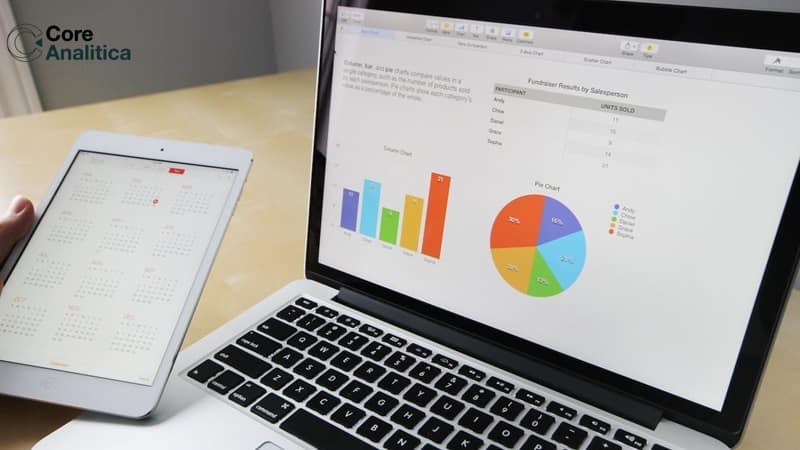
Azure Analysis Services and Microsoft Fabric Warehouse: Which one should we choose?
Azure Analysis Services and Microsoft Fabric Warehouse are two prominent players in the analytics field and they have unique approaches to analytics. Here we will try to highlight the differences between these two solutions, to make the best choice based on your organization’s analytics requirements.
Azure Analysis Services: Unveiling Advanced Analytics in the Cloud
Azure Analysis Services stands out as a cloud-centric analytics platform, enabling organizations to create, deploy, and manage analytical solutions. Functioning as a fully managed service, it leverages Microsoft’s powerful Analysis Services engine, facilitating the development of analytical models and the delivery of compelling insights.
Key Features of Azure Analysis Services
- Scalability: A standout feature of Azure Analysis Services is its scalable processing power, capable of handling extensive datasets and complex analytical workloads. The platform dynamically adjusts resources based on demand, ensuring optimal performance consistently.
- Seamless Integration with Power BI: Azure Analysis Services excels in its seamless integration with Power BI, Microsoft’s leading business analytics service. This integration establishes a smooth connection between data models and Power BI reports, fostering a unified analytics ecosystem.
- Robust Data Modeling Capabilities: The platform has robust data modeling capabilities, empowering users to establish complex data relationships, calculations, and hierarchies. This capability proves invaluable for organizations seeking sophisticated analytical models to extract meaningful insights from their data.
- Focus on Security and Compliance: Security and compliance take a prominent role in Azure Analysis Services. Features like row-level security and integration with Azure Active Directory strengthen the platform, ensuring the safeguarding of sensitive data and adherence to organizational access policies.
When to Choose Azure Analysis Services
Azure Analysis Services becomes the ideal choice for organizations under the following circumstances:
- Complex Data Modeling Needs: If your analytical requirements involve complicated data relationships, calculations, and hierarchical structures, Azure Analysis Services provides the necessary modeling capabilities.
- Integration with Power BI: For organizations heavily reliant on Power BI for data visualization and reporting, the seamless integration between Azure Analysis Services and Power BI makes it an effective choice.
- Scalability Demands: When dealing with large datasets and complex analytical workloads that require scalable processing power, Azure Analysis Services efficiently adjusts resources to meet these demands.
- Strict Enterprise-Level Security Requirements: Organizations with strict security and compliance needs find Azure Analysis Services to be an ideal fit, thanks to its robust security features and integration with Azure Active Directory.

Microsoft Fabric Warehouse: Democratizing Data Warehousing
Microsoft Fabric Warehouse takes a different approach to analytics, focusing on democratizing data warehousing and making it accessible to a wider range of users. Fabric Warehouse leverages Azure Synapse Analytics and Delta Lake to provide a serverless data warehousing experience, removing the need for complex infrastructure management.
Key Features of Microsoft Fabric Warehouse
- Serverless and Automated: Fabric Warehouse eliminates the need for infrastructure provisioning and management. It automatically scales resources based on your workload, allowing you to focus on insights rather than infrastructure.
- Unified Data Lake: Fabric Warehouse utilizes Delta Lake, a unified data lake format, to store and manage all your data in a single location. This makes it easy to access and analyze all your data without needing to move it between different systems.
- Built-in Analytics: Fabric Warehouse provides built-in analytics capabilities, including SQL querying, machine learning, and data visualization. This allows you to analyze your data directly in the warehouse without needing additional tools.
- Open and Extensible: Fabric Warehouse is open and extensible, allowing you to integrate it with your existing tools and workflows. You can also leverage a variety of third-party tools and services to extend the capabilities of the platform.
When to Choose Microsoft Fabric Warehouse
Microsoft Fabric Warehouse is a good choice for organizations looking for a simple and easy-to-use data warehousing solution with the following characteristics:
- Need for a serverless solution: If you want to avoid the hassle of managing infrastructure, Fabric Warehouse is a great option.
- Unified data lake: If you want to store and manage all your data in a single location, Fabric Warehouse’s Delta Lake integration is ideal.
- Built-in analytics capabilities: If you need basic analytics capabilities without the need for additional tools, Fabric Warehouse provides everything you need.
- Open and extensible: If you want to integrate your data warehouse with your existing tools and workflows, Fabric Warehouse’s open and extensible architecture makes it a good choice.
Making the Right Choice
The best choice for your organization will depend on your specific needs and requirements. If you need a powerful and scalable platform for complex data modeling and analysis, Azure Analysis Services is a good option. However, if you are looking for a simple and easy-to-use data warehousing solution that is serverless and open, Microsoft Fabric Warehouse is a great choice.
Additional Considerations
- Cost: Azure Analysis Services is priced based on the amount of resources you use, while Microsoft Fabric Warehouse has a fixed monthly price.
- Team skills: Azure Analysis Services requires more technical expertise to use, while Microsoft Fabric Warehouse is designed to be easy to use for everyone.
- Existing infrastructure: Azure Analysis Services can be integrated with your existing on-premises infrastructure, while Microsoft Fabric Warehouse is a cloud-only solution approach.
Tags:
UncategorizedRecent Posts
- Beyond the Rear-View Mirror: How Modern Analytics Is About Predicting the Future, Not Just Reporting the Past
- “What If…?” — Moving from Static Dashboards to Strategic Conversations with Your Data
- The Power BI Revolution: Why Giving Data to Everyone Is the Smartest Business Move
- Why Your Data “Plumbers” Are Your Most Valuable Growth Asset
- Data-Driven or Data-Overwhelmed? How to Build a Culture That Actually Uses Analytics

